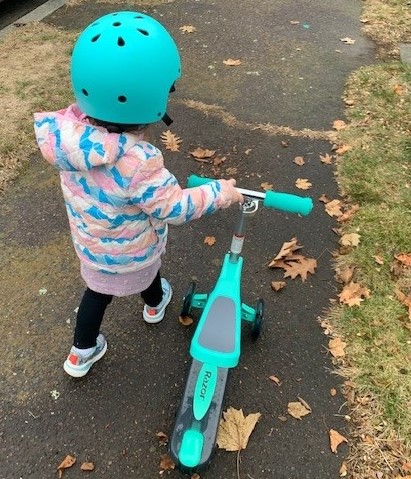About a 3 min. read
The Holiday season is now in the rearview mirror, and for me, this meant celebrating Christmas with my 2-year-old daughter as the center of my extended family. She had our undivided attention as we watched her open gifts and explored the wonders of the multiple treasures. To add to this, my parents’ & in-laws’ shared stories of me and my husband at her age and some of their fondest parallel memories. My in-laws even gifted my daughter some of my husband’s old toys (e.g., a Fisher Price bus, a Lion King stuffed animal, etc.) from when he was a boy.
Normally this wouldn’t have my blog wheels (not to be confused with #Hotwheels) spinning, but I’d recently spotted the article “Kidults are the biggest sales driver for the toy industry (cnbc.com)” related to a consumer group referred to as “Kidults” helping to keep the toy industry afloat.
While I don’t classify myself as a “Kidult,” I definitely buy the nostalgia angle. I wasn’t a Barbie collector, but I did love my American Girl & Polly Pocket dolls and plan to buy those for my daughter once she’s old enough. I have friends & adult family members who fall into the “Kidult” definition who collect action figures, play video or board games, wear apparel or watch content from some of the brands that were a huge part of their childhood (Star Wars, Marvel, LEGO, World of Warcraft, Animal Crossing, etc.). This led to a bunch of conversations around the (hybrid, metaphorical) water cooler, like:
All of this has me thinking, when should I be introducing toys and content to my daughter with her adult self in mind? Are today’s tweens and teens going to relish trying to feed their future Frozen appetites? How many Kidults will be insisting on officially licensed Hellfire Club (from Netflix’s Stranger Things) bedding for their first apartment 10 years from now? Will nostalgia stimulate demand for The Sims in a 2040’s decade version of the one Gen Zers play today?
From Market Sizing & Profiling to best understand this quickly emerging target market, to Segmentation to discover different co-horts within this audience, and how to best market message & prioritize product development to each of them (e.g., the Peter Pans, the Sentimentalists, the Escapists) to Brand Health to understand how this audience currently interacts with a brand and where that attachment could be strengthened, CMB can help brands develop a long-lasting, mutually beneficial relationship between brand + parent + kid that can endure decades.
American Girl Doll does an exceptional job providing a mix of communications and experiences that stick. LEGO is great at identifying designs that resonate with all ages and promoting an activity both parents and children can do together. Disney…well, you know that what that experience could/does entail. Even Fisher Price’s Little People line, which is geared towards toddlers, has started introducing limited edition products “Kidults” might be interested in, like figures from Ted Lasso or the Buffalo Bills. But what are other brands willing to do?
To ignore this audience would be missing out on a lot of potential to drive brand and revenue growth. Especially as adults are looking for an escape from reality today with growing inflation and other problems, brands can lean into this group’s desire to feel like a kid again, and in some cases, share that experience with their own kids. Whether it’s creating products or experiences specifically with “Kidults” in mind, or tweaking/marketing children’s toys or products to reach this audience, there is no shortage of opportunities. And I, for one, can’t wait to see what brands come up with next.

Here’s a picture of Jen’s daughter enjoying her favorite gift – a Razor scooter (yet again a throwback to Jen’s own childhood).